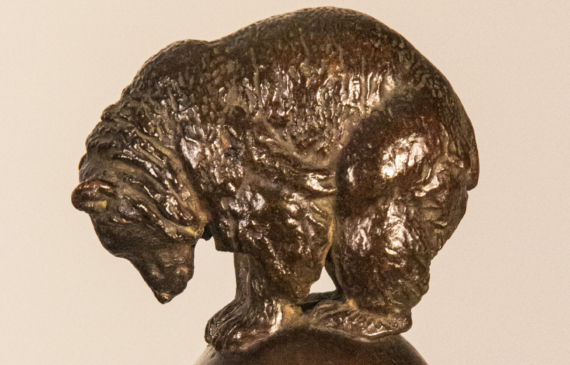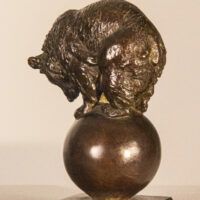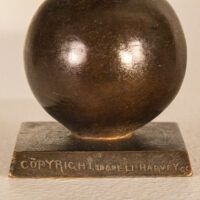






Born in a Quaker community in Ogden, Ohio, in 1860, Eli Harvey was inspired by the Midwestern landscape to draw and paint from an early age. He drew portraits of prominent figures in his hometown in order to raise the money to train at the Art Academy of Cincinnati. There, he studied painting with Thomas Satterwhite Noble and sculpture with Louis Rebisso.
In 1889, he moved to Paris to study with Lefebvre, Constant, Doucet, and finally, notable animal sculptor Frémiet. The latter influenced Harvey to sculpt the life-like animal sculptures for which he became known. During this period, animals were not widely regarded as subjects of great art, and Harvey struggled to find appreciation for his work. However, he won the opportunity to show at the Universal Exposition in Paris in 1900.
Harvey found much inspiration in zoos. While living in Paris, he drew and sculpted lions at the zoo in the Jardins Des Plantes for years. Upon his return to the United States in 1900, the New York Zoological Park in the Bronx became a favorite. In fact, Harvey won a competition to sculpt the lions for the Lion House at the New York Zoological Park in 1901. Harvey’s career began to gain momentum, and his work was exhibited at the Pan-American Exposition in Buffalo in 1900, the Louisiana Purchase Exposition in St. Louis in 1904, and the Panama-Pacific International Exposition in San Francisco in 1915.
Harvey remained true to his Christian upbringing and was opposed to using abstraction in his art as a result of these beliefs. He strove to portray the beauty of nature as God intended through his sculptures. His work is exceptional because instead of depicting his subjects in stylized poses, he shows their emotions and personality through great detail that could only be achieved through patient observation of real animals.
Harvey is best known for his life-sized elk produced for the Benevolent and Protective Order of Elks which was reproduced at their buildings and in many U.S. cemeteries. His eight-foot-tall sculpture of a bear was adopted as the Brown University mascot and sits on its campus today. He also sculpted two lions for the Eaton family mausoleum in Toronto.
Harvey died in Alhambra, California, in 1957, at 96 years old.